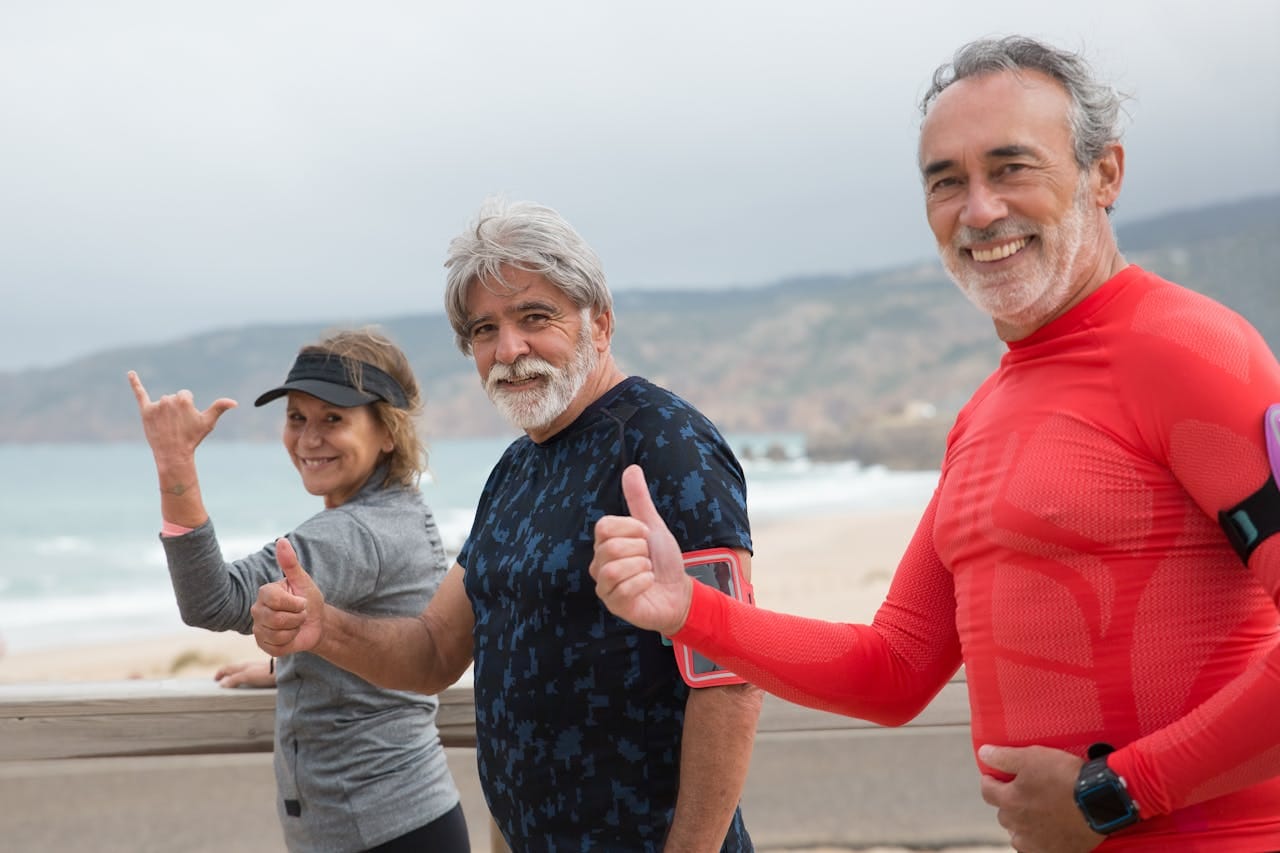Last Updated on November 17, 2025 by shawnshealth
Discover 7 simple beginner calisthenics for seniors to boost strength and mobility. Enhance your fitness journey with these easy exercises that promote overall wellness!
Calisthenics for Seniors to Boost Strength and Mobility: My Take
I’m all about calisthenics for seniors to boost strength and mobility. I am 59 years old as of this writing. I do a calisthenics strength workout every other day and do several hundred pushups each week, many pulling exercises, plus putting in work on leg strength. However, a pitfall I, and several of my clients, have identified is comparing ourselves to someone else, or the “me I used to be.” If you spend time in the comparison game, you may find that the perfectionism involved with that line of thought may paralyze you into inactivity.
Accept where you are now and build from that.
You are as strong and fit as you are today, right now, and you can’t magically change that in one afternoon. Those of us who were younger, possibly athletic, or even serious athletes in the past must remember this. If it’s been ten, twenty or however many years since you actually worked out you still need to be very honest with yourself and start here, with the basics. Give your body time to build that foundation again. Then, as you master the foundational movements and as you get stronger branch out and expand on your exercise repertoire.
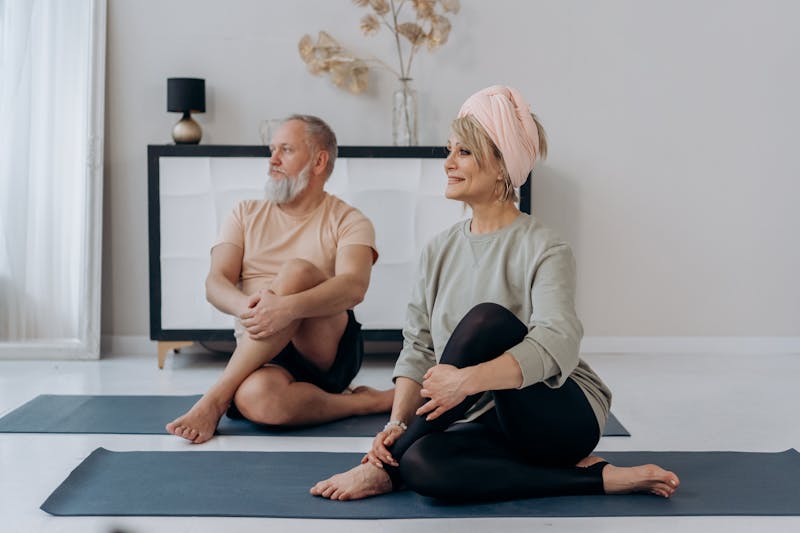
🔍💪Want to dive deeper into bodyweight training for older adults? Explore our Ultimate Calisthenics FAQ
for answers to common questions, tips, and progressions—and visit our Senior Fitness Pillar Post for safe, scalable routines designed specifically for the 60+ crowd. Both guides work together to help you build strength, mobility, and confidence at any age.
What are Some Principles of Beginner Calisthenics for Seniors?
- Focus on low-impact, joint-friendly movements
- Prioritize balance, coordination, and control
- Emphasize slow, deliberate repetitions
- Incorporate full-body functional patterns
- Encourage consistency over intensity
How Can Seniors Safely Start Calisthenics?
- Begin with bodyweight-only routines
- Use stable surfaces and supports when needed
- Warm up thoroughly before each session
- Listen to the body and avoid overexertion
- Allow extra recovery time between workouts
How Can Seniors Boost Strength and Mobility Over Time?
- Progress gradually by increasing time or reps
- Maintain proper posture and breathing
- Include mobility drills alongside strength work
- Monitor form to prevent injury
- Stay hydrated and rest regularly
🛒 Quick Tip: Looking for fitness gear? Browse top-rated equipment on Amazon to power up your workouts fast! 💪
As an Amazon Associate, I earn from qualifying purchases. This means I may receive a commission if you purchase through links on this site, at no extra cost to you.
Table of Contents
7 Simple Beginner Calisthenics for Seniors to Boost Strength and Mobility
As we age, maintaining strength and mobility becomes crucial for a healthy lifestyle. Calisthenics offers a fantastic way for seniors to build strength, flexibility, and balance without the need for gym equipment. In this article, we will explore seven simple beginner calisthenics exercises tailored for seniors, along with some advanced options for those looking to level up their fitness journey.
💪 Ready to move better, feel stronger, and stay independent? This video walks you through 7 beginner-friendly calisthenics exercises designed specifically for seniors. 🧘♂️✨ No fancy equipment—just safe, simple movements to boost strength, balance, and mobility at any age. Let’s get started!
Getting Started with Movement
Before jumping into a routine, it’s important to understand that calisthenics for seniors is about building strength and mobility in a safe, steady, and sustainable way. The goal isn’t to push limits, but to encourage confidence in everyday movement, improve joint function, and support overall well-being. By focusing on foundational principles, seniors can ease into activity while protecting their joints and maintaining balance. Let’s explore the approach behind these movements and how to integrate them effectively into daily life.
As you move forward, keep in mind that consistency and form matter far more than intensity or speed. Each movement should be performed with care, control, and attention to how your body feels. In the sections that follow, you’ll find a progression-friendly framework designed specifically for beginners—especially seniors—looking to regain strength and enhance mobility safely. Let’s begin with the foundational principles that set the stage for long-term success.
Progression: Building Strength Safely Over Time
Progression is key to gaining strength and mobility without risking injury. For most seniors, starting with 2 to 3 sessions per week allows for proper recovery while establishing consistency. Begin with 1 to 2 sets per movement, focusing on slow, controlled form. As these sets become easier and movements feel more stable, gradually increase to 3 sets per exercise. Once you can complete your sets with ease and good technique for two consecutive weeks, consider adding a few more repetitions or exploring a slightly more challenging variation. Always listen to your body, and prioritize quality over quantity. Progress may be gradual, but it should feel sustainable and empowering.
The Movements
1. Chair Squats
Chair squats are an excellent way to improve lower body strength and balance.
How to Do It:
- Stand in front of a sturdy chair with your feet shoulder-width apart.
- Lower yourself as if you are going to sit down, keeping your chest up and knees behind your toes.
- Stop just above the seat, hold for a second, and then rise back up.
Benefits:
- Strengthens leg muscles.
- Improves balance and stability.
2. Wall Push-Ups
Wall push-ups are a gentle way to work on upper body strength.
How to Do It:
- Stand facing a wall with your arms extended at shoulder height.
- Place your palms against the wall and step back slightly.
- Bend your elbows to lean your body towards the wall, then push back to the starting position.
Benefits:
- Strengthens the chest, shoulders, and arms.
- Easy on the joints compared to traditional push-ups.
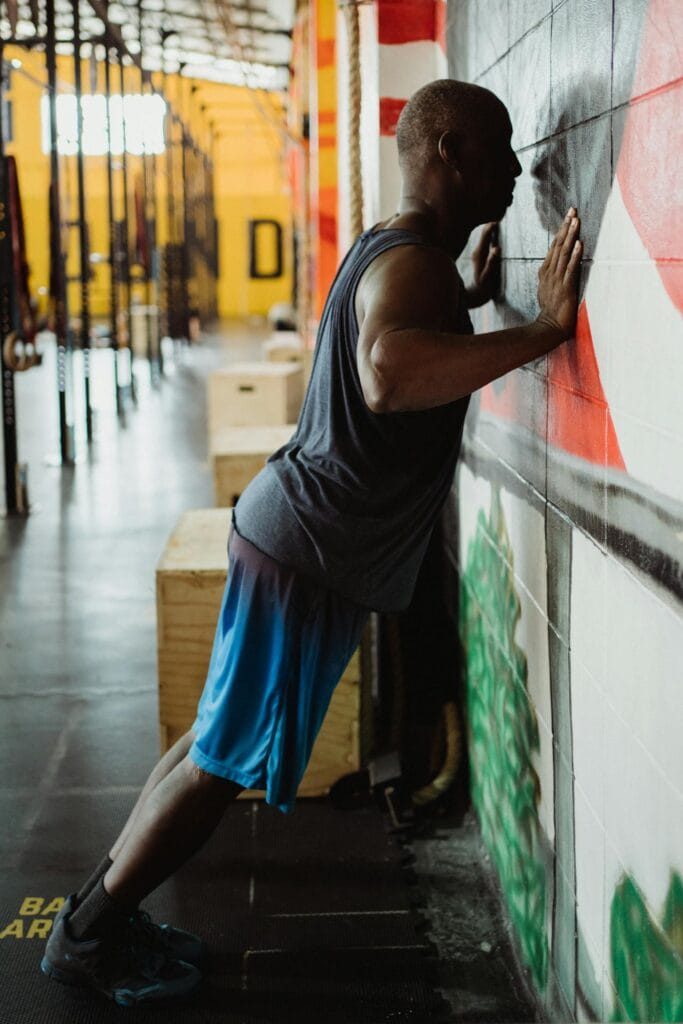
3. Seated Leg Raises
Seated leg raises are perfect for enhancing core strength and hip mobility.
How to Do It:
- Sit on the edge of a sturdy chair with your back straight.
- Extend one leg straight out in front of you and hold for a few seconds.
- Lower it back down and switch to the other leg.
Benefits:
- Improves hip strength.
- Engages core muscles for better stability.
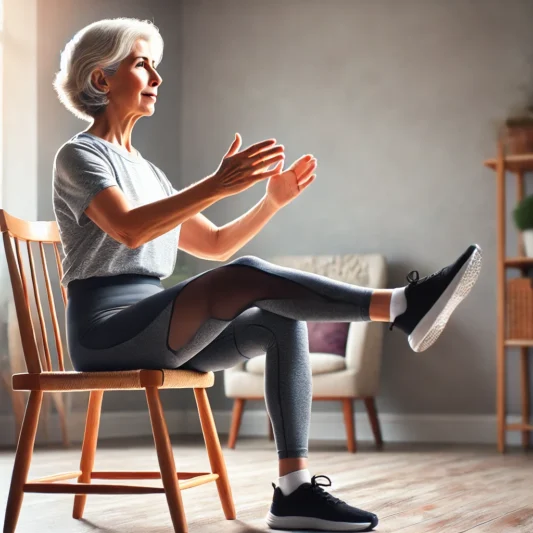
4. Standing Calf Raises
This exercise helps strengthen the calves and improve balance.
How to Do It:
- Stand with your feet hip-width apart, holding onto a chair or wall for support.
- Rise onto your toes, lifting your heels off the ground.
- Hold for a moment, then lower back down.
Benefits:
- Strengthens calf muscles.
- Enhances balance and stability.
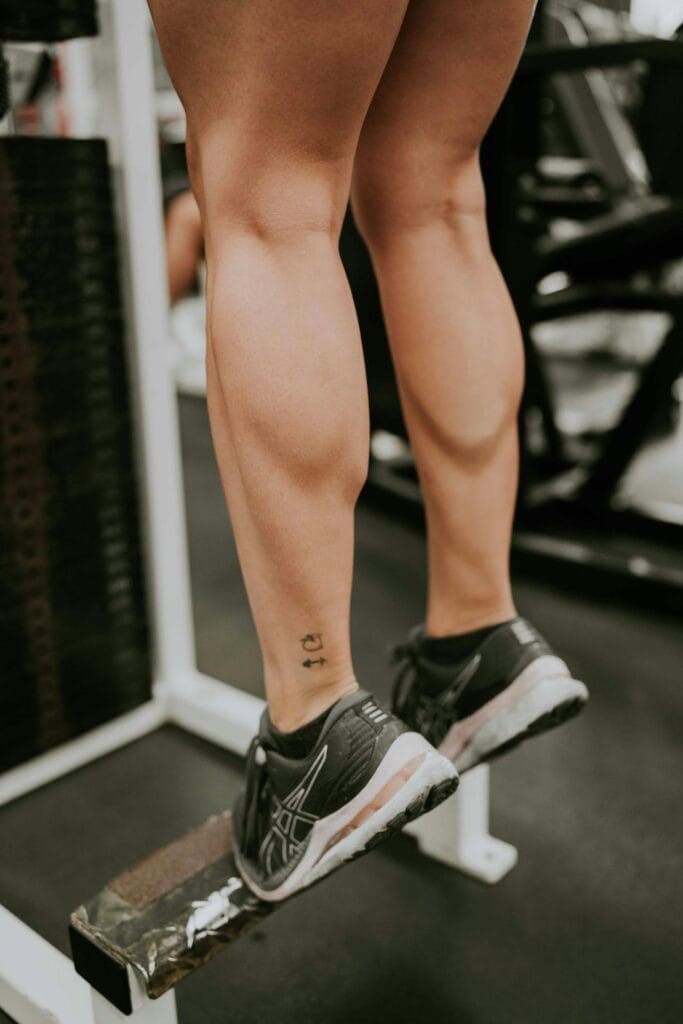
5. Arm Circles
Arm circles are a great way to improve shoulder mobility and flexibility.
How to Do It:
- Stand or sit up straight with your arms extended out to the sides.
- Make small circles with your arms for 15-30 seconds, then switch directions.
Benefits:
- Increases shoulder flexibility.
- Warms up the upper body.
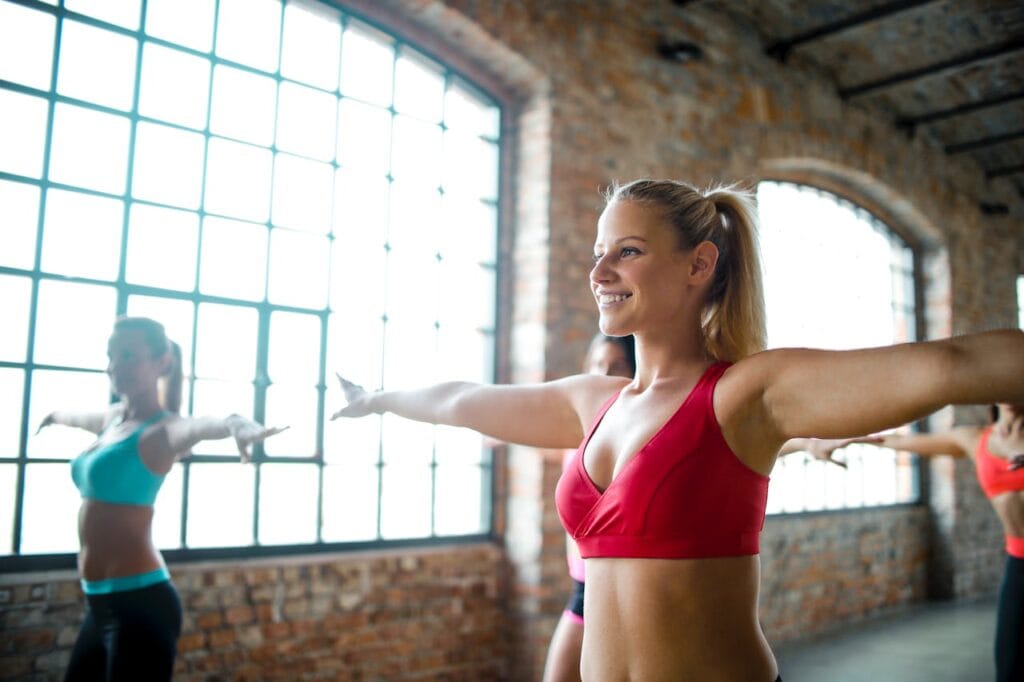
6. Toe Touches
Toe touches help improve flexibility in the hamstrings and lower back.
How to Do It:
- Stand with your feet shoulder-width apart.
- Bend at the hips, reaching down towards your toes.
- Hold for a few seconds before slowly standing back up.
Benefits:
- Increases flexibility in the back and legs.
- Improves balance and coordination.
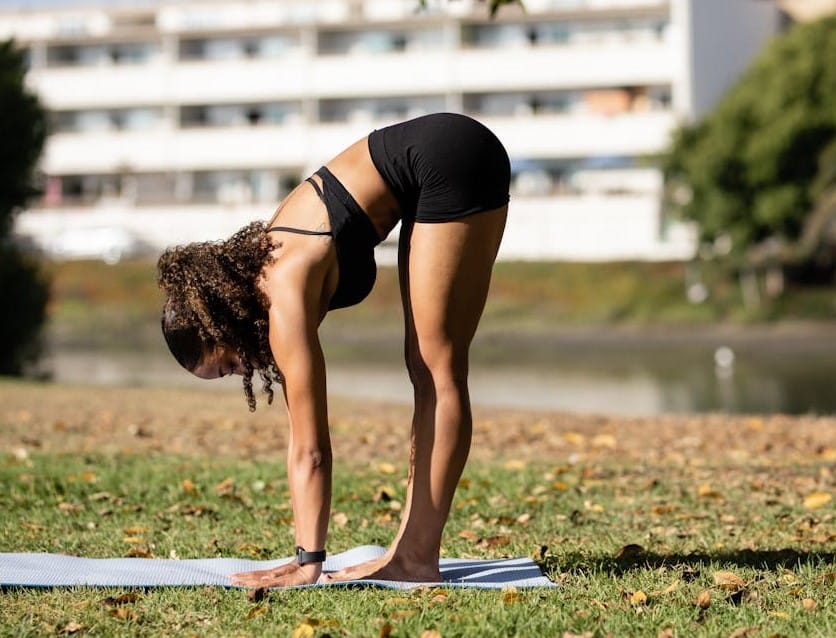
7. Side Leg Raises
Side leg raises help strengthen the hip muscles, enhancing stability and balance.
How to Do It:
- Stand next to a chair or wall for support.
- Lift one leg straight out to the side and hold for a moment.
- Lower it back down and switch legs.
Benefits:
- Strengthens hip muscles.
- Improves balance and coordination.
Advanced Calisthenics for Seniors
Once you feel comfortable with the beginner exercises, consider trying these advanced calisthenics to further boost your strength and mobility:
1. Assisted Pull-Ups
Using a resistance band or a low bar, practice pull-ups to enhance upper body strength.
2. Planks
Start with wall or knee planks, gradually progressing to full planks for core stability.
3. Step-Ups
Use a low step to improve leg strength and balance by stepping up and down.
🧓👵 Aging doesn’t mean slowing down—it means moving smarter! Check out this uplifting video from Front Row featuring Ed and Elizabeth 💬 as they guide you through simple, effective mobility exercises designed to keep you strong, steady, and confident as you age. 🧘♀️🚶♂️
Conclusion
it’s important to do calisthenics for seniors to boost strength and mobility. Incorporating these 7 simple beginner calisthenics for seniors into your daily routine can significantly boost your strength and mobility. Always listen to your body, start slowly, and gradually increase intensity as you become more comfortable. Remember, staying active is vital for maintaining a healthy lifestyle at any age!
🏋️♂️ Curious about how functional training stacks up against traditional strength work? Dive into our post on Functional vs Strength Training for practical tips, key differences, and guidance on choosing the right approach for your goals and lifestyle. 💡💪
Additional Resources
🧠💪 Want to stay strong, sharp, and independent as you age? Discover The Many Benefits of Resistance Training as You Age from the Mayo Clinic—backed by research and packed with practical insights to help you build muscle, boost metabolism, and protect your brain, bones, and balance. A must-read for aging well!
🔥 Gear to Help You Achieve Your Health and Fitness Goals 💪
If you’re looking for tools to enhance your fitness journey, check out this. Explore top-rated fitness gear on Amazon to enhance your workouts. Check out the latest picks here! 🛒 to support your workouts and progress.
🚀 Find equipment designed to boost strength, endurance, and overall performance!
⚠️ Short disclaimer: As an Amazon Associate, I earn from qualifying purchases.
Frequently Asked Questions About Beginner Calisthenics for Seniors
Is calisthenics safe for seniors?
- Yes, when adapted for individual ability levels
- Low-impact nature makes it joint-friendly
- Focus on control and balance reduces fall risk
How often should seniors do calisthenics?
- 2 to 3 times per week is ideal for beginners
- Allow at least one day of rest between sessions
- Consistency is more important than frequency
What are the main benefits of calisthenics for seniors?
- Improves strength, balance, and flexibility
- Enhances coordination and joint mobility
- Supports independence in daily activities
Do seniors need equipment for calisthenics?
- No, calisthenics uses body weight for resistance
- Chairs, walls, or railings can be used for support
- Optional props can aid safety and comfort
How long should a beginner calisthenics session last?
- Start with 10 to 20 minutes per session
- Focus on quality movements, not duration
- Gradually increase time as endurance improves
When should a senior increase difficulty or reps?
- When movements feel stable and easy for 2 weeks
- No discomfort or strain is present
- Energy remains consistent throughout the session
Ready to Take the Next Step?
💪 Ready to take the next step in your fitness journey? These beginner calisthenics for seniors to boost strength and mobility are just the start. Explore more routines, tips, and gear to stay strong, independent, and active—at any age.
👉 Visit shawnshealth.com for expert advice and free resources to help you stay active at any age!
And the Lord, He is the One who goes before you. He will be with you, He will not leave you nor forsake you; do not fear or be dismayed. – Deuteronomy 31:8

